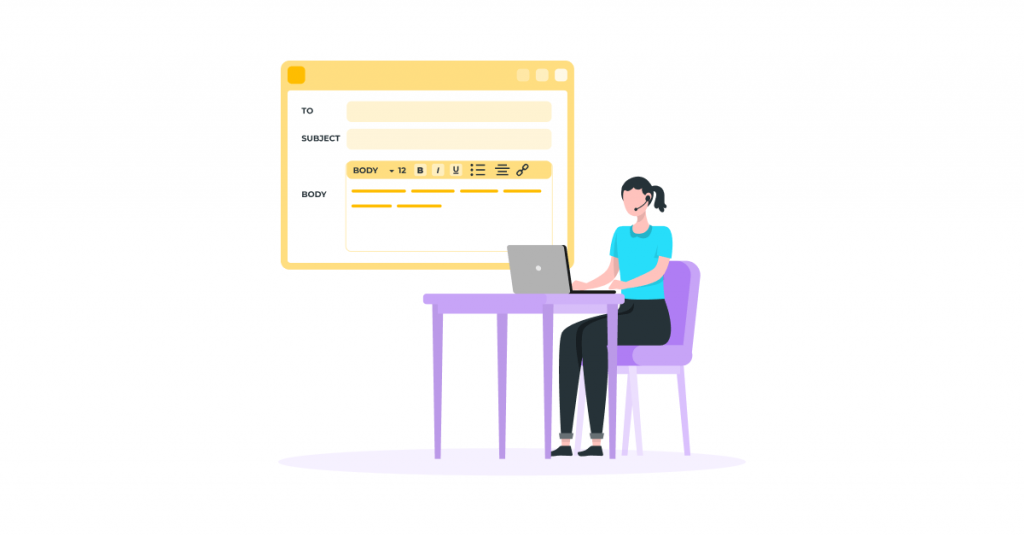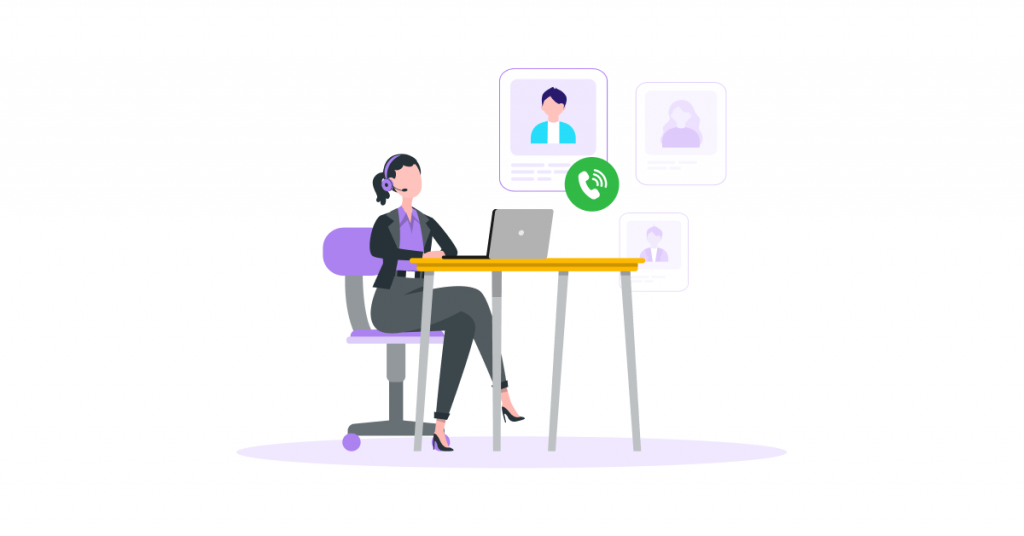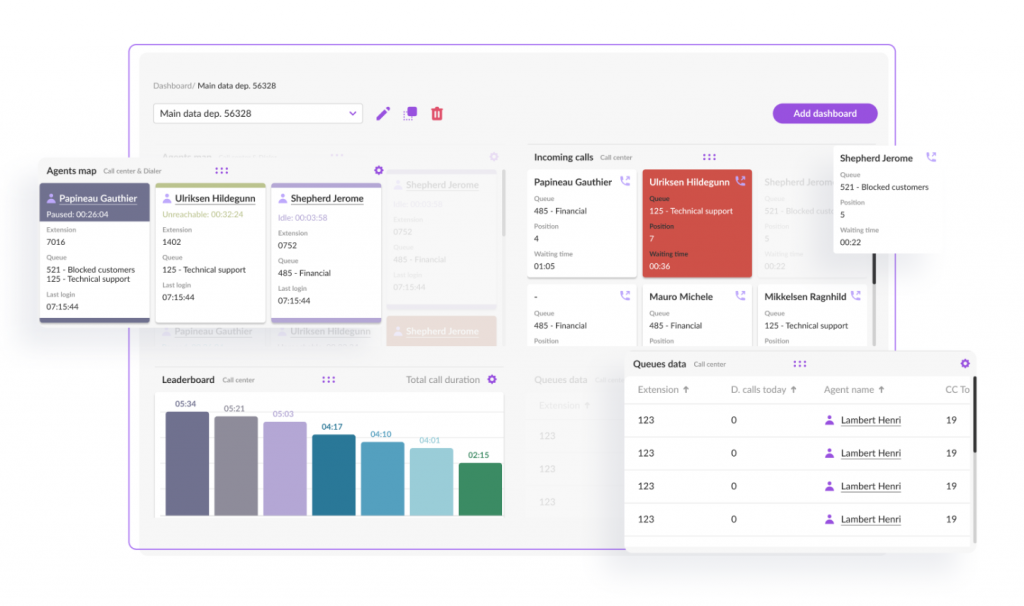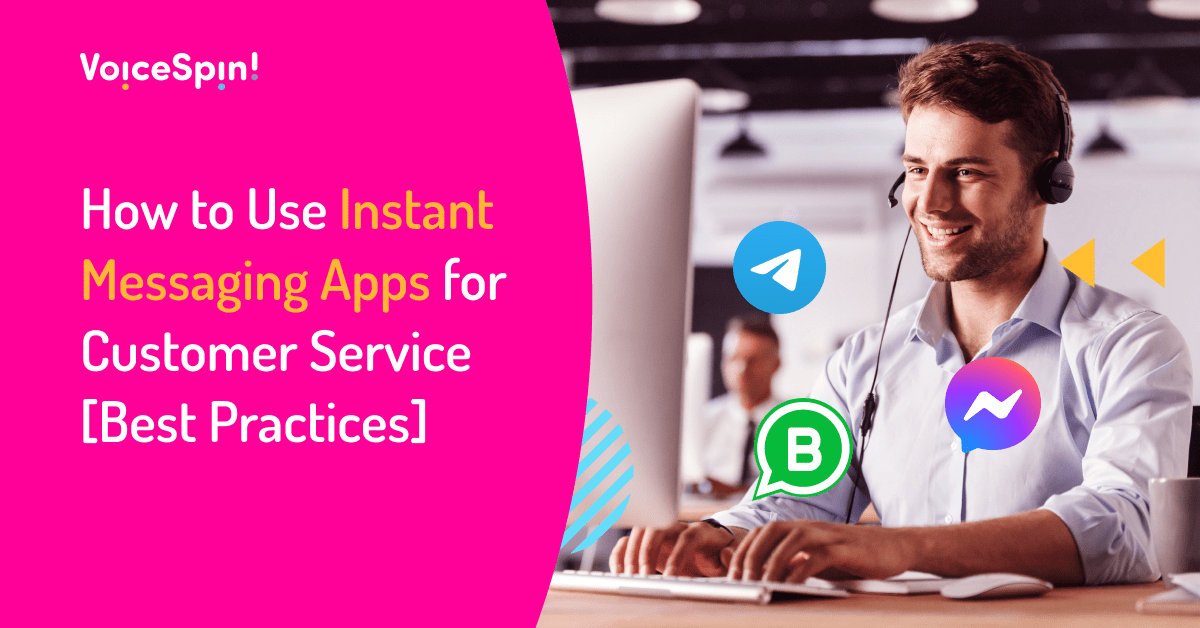Numerous studies and industry reports have proved the importance of delivering outstanding customer service experience and its impact on your bottom line. No business leader would argue against that. Salesforce recently found that as many as 84% of consumers claim the experience a company provides is as important as its products and services, and 66% are even willing to pay more to get a great experience.
How do you go about building a robust customer service strategy within your organization? First off, you would obviously need to decide on the right customer support channels that align with your customer expectations and satisfy their needs.
In this blog, we’re going to take an in-depth look at the most popular customer service channels to help you choose the ones that would best suit your customer support needs and customer preferences.
Breaking down Single-channel, Multichannel, and Omnichannel Customer Support
Single-channel support
A single-channel approach is pretty basic and straightforward: you would simply offer your customers a single option to get in touch with your business. That would typically be phone or email – and that’s where most businesses embark on their customer support strategy. As your business grows, scales, and attracts more customers, you would most probably quickly outgrow that approach.
Multichannel support
With multi-channel customer support, you would offer your customers more options to connect with your business (e.g., email, phone, and live chat), making it easier and more convenient for them to get customer support. But the downside of this approach is that all these communication channels may not always integrate well with each other, leading to siloed customer experiences and increased complexity to manage them efficiently.
Omnichannel support
Today’s tech-savvy and digitally connected consumers, however, are not only expecting brands to offer different communication channels; they actually want consistent experiences across multiple channels and devices. In fact, according to the State of the Connected Customer report by Salesforce, 78% of consumers prefer using different channels depending on the context, and 71% have used multiple channels to start and complete a single transaction.
- 69% of customers expect connected experiences.
- 64% expect tailored engagement based on past interactions.
- 78% expect consistent interactions across departments.
- 72% expect all company representatives to have the same information about them.
At the same time, 59% of the survey respondents say it generally feels like they’re communicating with separate departments, not one company, and 66% say they often have to repeat or re-explain information to different representatives. That wouldn’t be the case if businesses offered omnichannel support, and it means that many haven’t yet completely embraced the omnichannel transformation.
Related article: A Complete Guide to Omnichannel Contact Center
Top Customer Service Channels and Why Consumers Prefer Them
Gone are the days when consumers would instantly pick up the phone to get their questions answered or issues resolved. The proliferation of digital communication channels and their growing adoption by consumers prompted businesses to take on multichannel and omnichannel approaches.
If you’re looking to revitalize your customer service strategy and thinking through what additional customer support channels you should employ to meet your growing customer needs, here is a complete overview of top communication channels preferred by today’s consumers:
- Email Support
- Phone Support
- Live Chat Support
- Video Chat Support
- Chatbots and Voice Bots
- Social Media Channels
- Instant Messaging Apps
- Self-service Support
Email Support

Despite the availability and growing popularity of other customer service channels, email still remains incredibly popular. For most businesses, especially SMBs, in just about any industry, email is a must-have, non-negotiable customer service channel to offer to consumers. It is mainly preferred by consumers who aren’t comfortable with waiting on hold in long call queues while trying to get through to a live person.
Email allows for asynchronous communication and enables each member of your support team to work on multiple conversations simultaneously. On top of that, email is cost-efficient and can commonly be easily integrated with other channels. Despite these advantages, many businesses are actually struggling to deliver efficient customer support through email.
E.g., a study by SupperOffice revealed some alarming statistics about how businesses are managing their email support. Though nearly half of all the surveyed consumers (46%) expect companies to respond to email faster than 4 hours, and 12% expect a response within 15 minutes or less:
- The average response time to handle customer service emails is around 12 hours.
- Only 20% of companies are able to answer a customer’s questions on the first reply.
- 62% of companies completely ignore customer service emails.
- 90% do not acknowledge or inform a customer they have received their email.
- 97% of companies do not send follow-up emails to see if customers are satisfied with the response.
Phone Support

Alongside email, phone continues to dominate as the channel of choice for a huge number of consumers across all age groups and demographics. A Salesforce study found that 59% of consumers prefer the tried-and-true phone calls to reach a customer support representative. The reasons behind that are pretty obvious.
Unlike having to wait for hours (or even days) to get an email response from a company, phone support allows receiving assistance almost immediately – and it is inherently more personal and straightforward. Customers can get detailed answers to their questions, ask follow-up questions, and get empathetic, personalized support, adding the human element to the customer experience. It’s also a preferred support channel for less digitally savvy consumers.
In some industries like healthcare, telecom, or finance that prioritize real-time, secure interactions or deal with complex customer inquiries, phone support remains predominant. However, managing phone support effectively does come with certain challenges.
E.g., if you run an international business and your customers are located worldwide, it might be hard to provide customer support across time zones. Besides, increased call volumes would naturally result in longer wait times for customers, which can lead to customer frustration and negatively impact your customer satisfaction levels.
Live Chat Support
Live chat is one of the fastest-growing support channels and the one that generates higher customer satisfaction levels compared to other customer support channels. E.g., according to Zendesk research, live chat has the second-highest customer satisfaction ratings (85%), behind only phone support (91%). It is also the most preferred customer support channel for Gen Z and Millennials.
Consumers love live chat primarily because of the convenience it provides. First, it’s an excellent way to get immediate, real-time support in only a couple of clicks, allowing customers to interact with a live support representative anytime and anywhere without having to navigate through IVR menus and wait on hold while trying to reach a live agent. With features like file sharing and co-browsing, your customer support team can resolve customer issues in a faster and more efficient way.
In addition, live chat allows for delivering proactive support. E.g., with proactive chat triggers, your agents can reach out to consumers and offer timely assistance while they are browsing your website. That can also boost engagement, reduce shopping cart abandonment, improve conversions, and increase sales. For businesses, it’s also a cost-efficient and flexible solution that is fairly easy to implement.
Video Chat Support
Video chat is one of the emerging customer support channels that is getting increasingly popular among consumers. While it’s definitely not a must-have channel for everyone, certain industries such as banking and finance, insurance, investment, healthcare, technology, and remote learning can particularly benefit from offering video chat support to their clients alongside other support channels.
Video chat support not only offers immediate assistance to customers like phone or live chat, but it also helps identify and address complex issues quicker and with greater efficiency. More importantly, face-to-face interaction through video chat offers consumers a more personalized and interactive experience, helps build trust and rapport with customers, and facilitates better engagement. That also helps improve first contact resolution and increase customer satisfaction.
Chatbots and Voice Bots
Unlike other customer support channels that rely on human-to-human interactions, chatbots and voice bots don’t require a live customer service representative to operate them. The wide adoption of Artificial Intelligence (AI) and Natural Language Processing (NLP) technologies in customer service accounts for the increasing implementation of chatbots and voice bots across many industries.
According to stats published by Outgrow, 69% of users prefer chatbots because they provide quick answers to simple questions, and 56% prefer to use chatbots over calling customer support. Chatbots and voice bots are immediately available service channels, enabling consumers to get customer support whenever they need it.
From the business perspective, AI chatbots and AI voice bots allow you to offer 24/7 support and reduce the number of repetitive queries. They can be used as the first point of contact, helping customers get answers to basic inquiries or directing them to other self-help resources, like your FAQs or knowledge base articles. B2B and SaaS, education, real estate, travel, and healthcare are some of the top industries where chatbots and voice bots are already actively utilized.
Recommended reading: Customer Service AI Voice Bots: The Ultimate Guide
Social Media Channels
Considering that there are currently over 4.5 billion social media users worldwide, and around 80% of consumers use social media to engage with brands, it presents a huge opportunity for businesses to scale their customer support and improve customer engagement. For B2C businesses, in particular, social media is now one of the 3 biggest support channels behind email and phone.
Here are some compelling stats from SproutSocial and Twitter about how consumers are connecting with brands on social media:
- 64% of customers on Twitter say they would rather message a dedicated support handle than call a business.
- 53% of Twitter users find it helpful to see how brands answer questions or solve customer issues publicly.
- 34% of Twitter users purchased a company’s product or service after a positive interaction on Twitter.
- 51% of Twitter users say their experience communicating with a brand on Twitter makes them feel more favorable toward the brand.
Social media platforms like Twitter, Facebook, and Instagram are great for businesses to support and engage with their customers. But given the public nature of social media support, brands need to be very careful about the way they respond to complaints, as even a small blunder might attract much negative attention, impacting your brand reputation.
Instant Messaging Apps

Today’s customers increasingly expect to be able to connect with businesses through the same channels they use in their daily lives to connect with family and friends. That is why Instant messaging apps like WhatsApp and Facebook Messenger have recently become fundamental channels for businesses looking to provide instant and personalized customer support to keep up with customer expectations. Salesforce found that 33% of consumers prefer instant messaging apps to communicate with companies. Let’s take a look at some more impressive stats:
- WhatsApp has around 2.44 billion monthly active users worldwide.
- Over 100 billion messages are sent each day on WhatsApp.
- Nearly 175 million people send messages to WhatsApp business accounts daily.
- Every day 260 million new conversations take place on the Facebook Messenger app.
- 20 billion messages are exchanged every month on Facebook between businesses and customers.
Implementing instant messaging apps as customer support channels offers many advantages for businesses. E.g., like with live chat, agents can handle multiple conversations simultaneously, increasing the speed and efficiency of support. In addition, IMs can be integrated with chatbots, enabling businesses to provide self-service options and answer common inquiries.
Moreover, businesses can use instant messaging apps to reach out to prospects and customers proactively by sending out proactive support messages, follow-ups, relevant updates, or personalized offers – leading to increased engagement, brand loyalty, sales, and retention.
SMS Text Messaging
Compared to other customer support channels, SMS texting isn’t very popular among consumers. To be more specific, only 19% of consumers prefer SMS texting to reach out to businesses, according to a Salesforce study. For businesses, though, it can be effectively used for proactive customer service and support. E.g., you can send proactive customer service alerts, payment notifications, appointment reminders, or any other critical messages to your customers.
Given typically high open rates (98% compared to just 20% for emails), SMS texting can be a truly efficient proactive support channel and a valuable addition to your existing channels, allowing you to get your important messages delivered to your customers almost instantly and ensuring that these messages will be opened and read by nearly 98 out of 100 recipients.
Self-service Support
Providing your customers with self-service options such as knowledge bases, FAQs, customer portals, and community forums is an excellent way to extend your customer support offerings beyond traditional, human-powered channels. Numerous studies have proved that self-service support channels are becoming increasingly expected by consumers. According to the data from Statista, 88% of consumers expect brands or organizations to have a self-service support portal.
A report by Higher Logic Vanilla revealed more statistics that might surprise you:
- 84% of consumers try to solve support issues on their own before they reach out to customer support.
- 77% view organizations more positively if they offer self-service options for customers seeking support.
- 92% say they would use a knowledge base, and 83% would use an online community for self-service support if those options were available.
- 62% say that an active and visible support community increases the likelihood of making a purchase.
Apparently, consumers have become much more self-reliant when it comes to getting customer support – and offering comprehensive self-help support resources gives them the power to find answers to their questions and resolve issues independently without having to contact your team, leading to increased customer satisfaction and improved CX.
Your knowledge base can include just about anything that can help your customers better understand your products or services, like how-to guides, troubleshooting instructions, webinars, a video library, etc. If your product or service isn’t technically complex enough to require a full knowledge base, you could simply go with a FAQ section covering the most commonly asked questions.
Self-service support isn’t only great for consumers; it has many benefits for businesses, too, empowering them to literally deliver round-the-clock support that can serve the needs of thousands of customers, even when your support team isn’t available. That makes it more cost-efficient compared to other channels. Besides, it helps your team be more productive by cutting down on repetitive requests and freeing them up to focus on more complicated issues.
How to Select and Implement the Right Customer Service Channels for Your Support Needs
How do you go about selecting the most effective customer service channel for your customer support needs? For the most part, that would definitely be more than one channel. But you also don’t necessarily need to add every single channel and overwhelm your customers with an abundance of options to choose from. Here are some tips to help your decision-making.
Review the current state of your customer support channels
Before you think of implementing new channels, conduct an in-depth audit of the channels you are already offering to your customers to get insights into how they are actually performing. Service standards and customer expectations are constantly evolving, and the channels that once worked well and completely satisfied your customers may no longer align with your current customer support needs.
Take a look at the metrics like Customer Satisfaction Score (CSAT) and Customer Effort Score (CES) for each channel and how these have progressed over time. If you notice a steady drop, it might indicate that this channel is decreasing in popularity among your customers. But before you decide to abandon it altogether, consider focusing on improving it first before adding new channels.
Learn more about your customers and their channel preferences
Not all channels are relevant to your business and your customers. ‘Provide support where your customers are’ is a general rule of thumb when it comes to selecting channels to implement, but that still requires a deeper level of consideration. The best customer service channels are the ones that your customers are already actively using and highly expecting you to offer based on the complexity of typical customer inquiries, desired response times, and level of personalization.
One of the quickest and most efficient ways to get insights into customer preferences, expectations, and communication habits is by asking them through surveys. Below are some of the questions you can ask:
- Which support channels do you currently use to interact with our business?
- On a scale of 1-5, please rate your satisfaction with each channel you have used.
- Which support channel do you find most convenient and comfortable to use?
- Which support channel do you believe provides the fastest issue resolution?
- Are there any support channels that you find difficult to navigate or use effectively?
- Would you appreciate the availability of additional support channels? If yes, please specify the channels you would like us to offer.
Integrate your channels to deliver omnichannel experiences
We’ve already mentioned the importance of providing omnichannel customer support experiences to consumers. When you combine multiple channels into a single omnichannel communication platform integrated with your CRM system, you basically enable your agents to deliver a frictionless customer support experience across multiple touchpoints by providing them with a unified view of customer interactions and conversation history. And you also allow your customers to easily transition between channels while still getting efficient, contextual, and personalized support.
Train your customer support team to manage each channel effectively
One essential thing to remember is that your customer service is only as good as the people providing it. Once you’ve decided on the new channels to add, make sure your team is able to manage them in the most efficient way by providing comprehensive training on channel-specific communications skills, technology usage, and best practices.
Keep in mind that not every member of your support team is best suited to working on every channel. E.g., while some might do just well with the fast-paced live chat environment, others may get overwhelmed with it. Assign support agents to the channels that are most suited to their experience and skill set.
Continuously measure performance, adapt, and evolve as needed
Establish metrics and Key Performance Indicators (KPIs) to measure the success of each channel and how agents are performing while managing them. You might find it helpful to track response times, Average Handle Times, First Contact Resolution rates, CSAT scores, and other relevant metrics. Use this data and customer feedback to identify areas for improvement and agent training opportunities.
Customer service trends, technologies, and customer preferences naturally evolve over time, and so should your customer support strategy. Be always open to incorporating new channels or refining existing ones to adapt to the changing customer needs and industry expectations.
Optimize Your Customer Support with VoiceSpin’s Omnichannel Contact Center
Introducing and effectively managing support channels your customers prefer most can go a long way in helping you build stronger relationships with them and improving customer satisfaction levels and customer loyalty. While you don’t necessarily need to implement all the communication channels listed above, make sure to collect feedback from your customers to gouge their preferences and build your support strategy around your customers’ needs.

At VoiceSpin, we believe in the digital transformation of the customer service industry. That’s why we’ve built AI Messaging, an omnichannel communication platform that consolidates email, live chat, social media, WhatsApp, Facebook Messenger, and other popular Instant Messaging apps into a single platform. You can easily integrate and manage all these digital channels from a unified inbox, delivering exceptional service and a seamless customer support experience across all the touchpoints, improving CX and customer retention.
Book a 30-minute demo to learn more about VoiceSpin’s AI Messaging and how it can help you deliver a consistent customer service experience across multiple channels, meeting your customers’ needs where they are.





 +18889082995
+18889082995
 +442036084160
+442036084160
 +97237237006
+97237237006